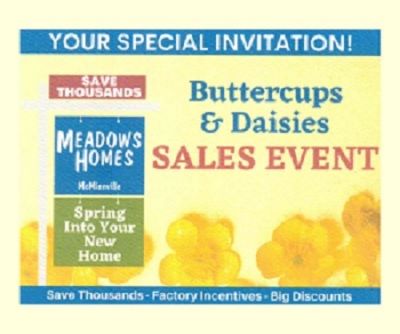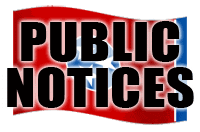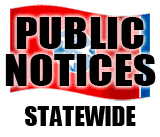By MIKE VINSON
"Outlaw biker"/1%er: a bearded, long-haired, booted, leather-clad dude with a raised-middle-finger attitude, astride a Harley-Davidson motorcycle that shakes the pavement with a guttural rumble!
Writer/producer Kurt Sutter reinforced the above characterization with his award-winning television series "Sons of Anarchy," about a modern-day outlaw motorcycle club in California, which ran for seven seasons, September 2008 - December 2014.
Two facts helped ratify the outlaw biker image into cultural legislation: (1) the emergence of the Hell's Angels Motorcycle Club onto the national scene in the mid -'60s via mass media coverage. And (2) the 1969 release of the cult-classic movie "Easy Rider," starring Peter Fonda and Dennis Hopper as two nomadic bikers rolling down the highway to the Steppenwolf song "Born to be Wild."
What about the actual "birth" of the outlaw biker, though? Who/what planted the first seeds?
Having spilled guts and tasted blood, many young men returned home from World War II in a psychologically frazzled state, unable to adjust to everyday life. As coping mechanisms, they recklessly rode their motorcycles around town, consumed copious amounts of booze, and engaged in barroom brawls, the "Miscreant's Paradox," as it's been termed.
One night in 1946 inside a bar in California a man named William Forkner formed a motorcycle club and called it "Boozefighters." The name speaks for itself. With the exception of one, every original Boozefighter member was a World War II veteran.
Around the same time, 1946, in Bloomington, California (San Bernardino County), former World War II pilots, gunners, and bombardiers formed a similar motorcycle club that went by the acronym "POBOBs," which stood for Pissed-Off Bastards of Bloomington. Again, the name speaks for itself.
It wasn't long until both the Boozefighters and POBOBs had other "chapters" (affiliate clubs) spring up all over California.
*THE HOLLISTER RIOT
"Since World War I, the AMA [American Motorcycle Association] had organized Gypsy Tours, which were long-range rides to motorcycle rallies being held in selected locations. The West Coast had long been a popular region to hold these events and in the summer of 1947, a Gypsy Tour was scheduled to take place in the small town of Hollister, California over the Fourth of July weekend" (source: the book "Wild Ride," page 45, author Tom Reynolds).
Located approximately a 2-hour drive south of San Francisco, Hollister had a population of just over 4,000, and a police force of only 6. Though the numbers vary, it is known that several thousand bikers, from all across America, converged on Hollister on July 3, 1947. Some of the motorcycle clubs in attendance were: Tophatters, Galloping Goose Motorcycle Club, and, yes, the Boozefighters and the POBOBs.
The bikers quickly grew bored with scheduled motorcycle events, and the rally at Hollister turned into booze-fueled pandemonium! Bikers ran traffic lights at a reported 80 mph, fought on the streets, passed out on the sidewalks, urinated in public ... it was Helter Skelter comes to Mayberry! The bedlam went on for four days, July 3-6 1947, until local police called in the California Highway Patrol.
However, sometime during the Hollister Riot/rally, a reporter named Barney Peterson, who worked for the "San Francisco Chronicle" newspaper, took a photo of a biker sitting atop a Harley, a beer in each hand, broken beer bottles all around his motorcycle. This photo, with an accompanying article, was featured in the July 21, 1947 edition of LIFE magazine, arguably the most widely-read magazine in America at the time.
*STANLEY KRAMER
In 1951, Hollywood filmmaker Stanly Kramer read a fictional short story titled "Cyclist's Raid," written by Frank Rooney, and based on the 1947 Hollister Riot. On contract with Columbia Studios--and much to the disapproval of studio heads--Kramer set about laying the groundwork for "The Wild One," starring Marlon Brando, a Hollywood sex symbol already famous for lead roles in earlier movies such as "A Street Car Named Desire" and "Julius Caesar." "The Wild One" was released in 1953, and, also, was based on the Hollister Riot of 1947.
A movie poster/advertisement for "The Wild One" featured a brooding Marlon Brando leaning on a Triumph motorcycle, with Brando wearing black gloves, a black, zippered leather jacket, and a biker's billed cap cocked to the side. With this poster, a movement was born.
If it hadn't been for the Hollister Riot of 1947, and Stanley Kramer producing "The Wild One," we might never have heard of the Hell's Angels, might never have seen the movie "Easy Rider," nor ever heard the term "outlaw biker."
(WRITER'S ASIDE: By all accounts, the first actual Hell's Angels Motorcycle Club was formed in San Bernardino, California, in 1948, by former POBOBs members. One will still hear the biker term "Berdoo Angels." The choice of club name appears to have been taken from the Flying Tigers' "Hell's Angels" squadron, a famous American fighter-plane outfit that flew dangerous missions during World War II. Further, it appears the first Hell's Angels Motorcycle Club with true structure and capability was formed in Oakland, California, in 1957. With the legendary Ralph "Sonny" Barger a founding member of the Oakland chapter, and eventual national leader of the organization, the Hell's Angels grew in power, with chapters now worldwide.)







